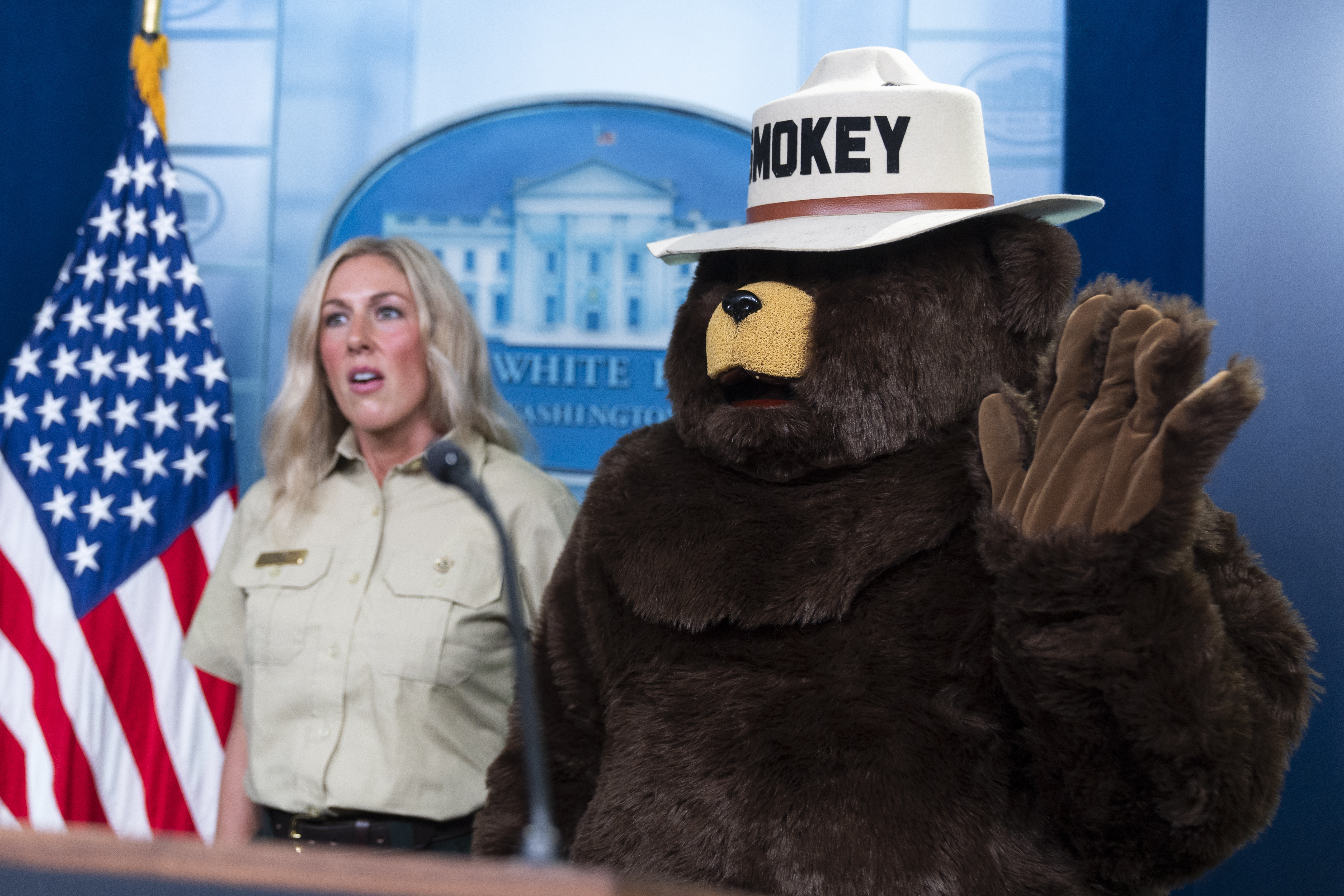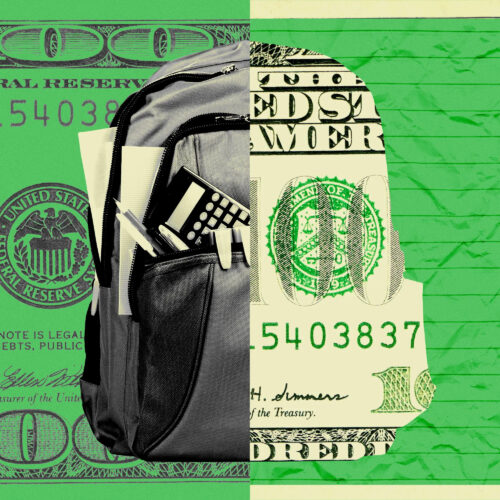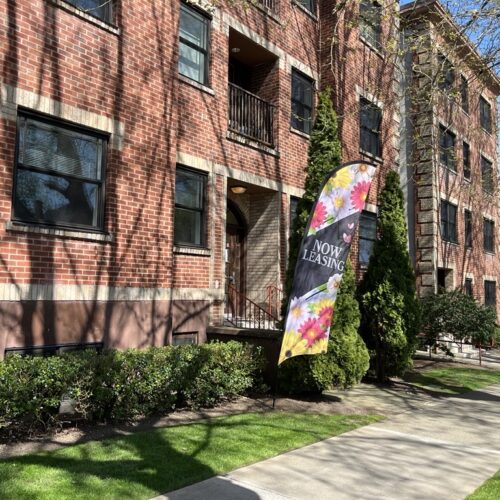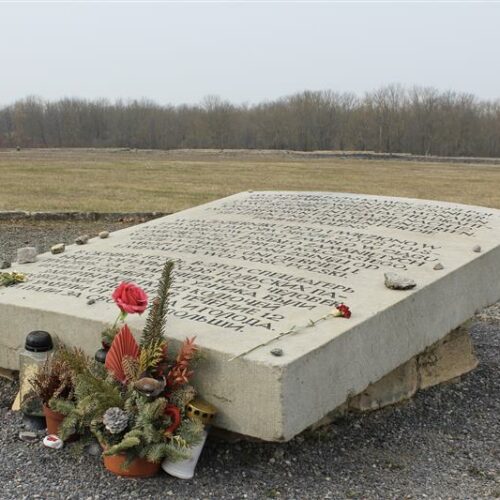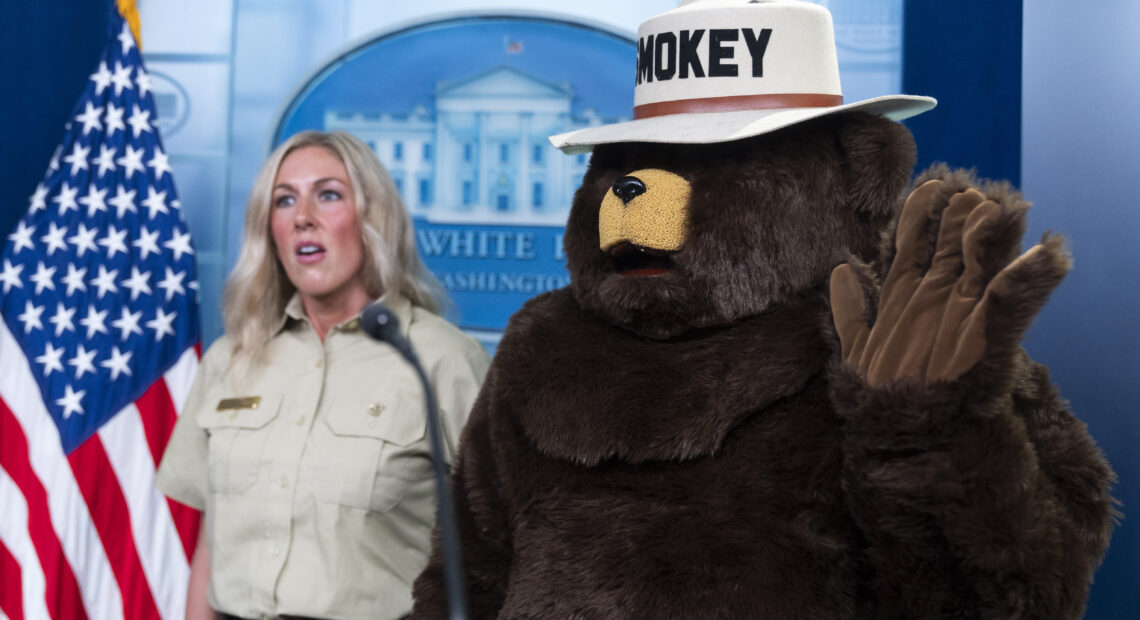
Conservation icon Smokey Bear celebrates his 80th birthday
Listen
(Runtime 1:06)
Read
Smokey Bear was created to educate the public on the importance of preventing wildfires caused by people. He’s since become a beloved symbol of conservation.
Because so many wildfires are caused by people, conservationists felt that the forests needed a representative who could get the message out about human’s responsibility in protecting nature. That’s according to Cyrus Forman, a public affairs officer for the U.S. Forest Service.
“People at the Forest Service wanted an icon who could inspire the public to recognize that protecting forests from wildfire was not just something that wildland firefighters did, but was something people could do,” Forman said.
On August 9, 1944, the U.S. Forest Service and the Ad Council agreed the fictional bear would represent forest fire prevention. Today marks his 80th birthday.
The history of Smokey Bear
Smokey Bear was launched during World War II because forest preservation was important to the war effort, Forman said.
“The airplanes that we were sending out to fight in World War II required forest products, the boats that we were sending out in record numbers required wood products, and American forests were actually a battlefront,” Forman said.
Ultimately, The American government recognized protecting forests as key to both the war effort and the post-war future of the nation, Forman said.
And the 1940s was a pivotal time in the evolution of American wildland firefighting, Forman said.
“There was more advanced technology, the use of strategy and tactics to contain wildfires and protect forest resources and human life was developing,” Forman said.
People understanding their responsibility in preventing wildfires has been an essential part of Smokey’s message since his creation, Forman said, and he’s the longest serving spokes-mascot of any government agency in the world.
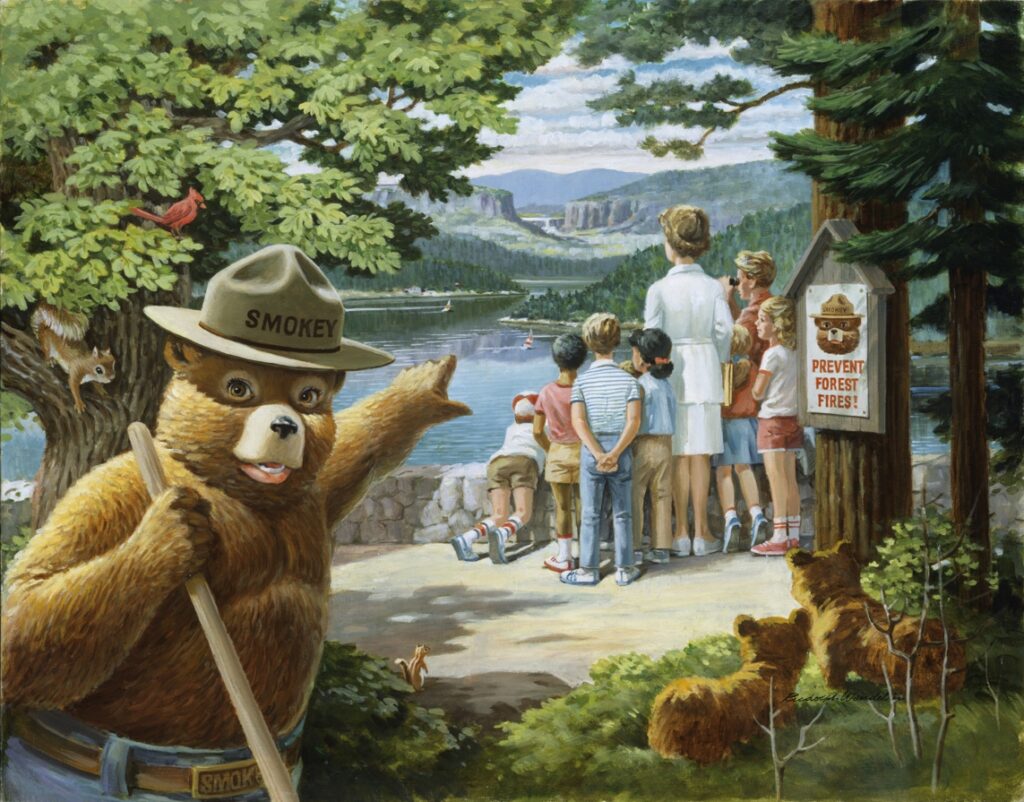
A painting of Smokey Bear holding a shovel while pointing at a group of visitors. The artwork was created by Rudy Wendelin in 1987. (Credit: USDA National Agricultural Library)
The indelible cartoon bear soon had his image merged with the story of a bear who survived a wildfire in the 1950s, said Forman.
A rookie fire crew on their second assignment spent 28 days fighting huge fires that burned more than 17,000 acres in the Lincoln National Forest of New Mexico.
While they battled the blaze, they happened upon a small, helpless animal, Forman said.
“They found a baby black bear who was clinging to the side of a tree and who was suffering bad burn injuries, but who had successfully survived a massive wildfire that they were responding to,” Forman said.
The fire crew rescued the bear, wrapping him in their jackets to protect his burned paws and got him medical care, Forman said. Then, the story of their rescue started to get the attention of the media.
“As the bear recovered, it was decided that this bear would become the real Smokey Bear,” Forman said.
The living symbol of Smokey Bear was taken to the National Zoo in Washington, D.C., and was housed there the rest of his life. He even worked occasional publicity events, Forman added. People could visit the bear and hear his story about experiencing wildfire. It helped reinforce educational messaging about preventing wildfire.
Throughout the decades, Smokey’s message has evolved alongside the changing tactics of controlling wildfires, Forman said.
“Smokey has acknowledged the existence of good fire, the importance of restoring fire to the landscape and the necessity of controlled burns to help build healthy forest ecosystems,” he said.
Educating the public is part of the job, which is why Smokey is constantly making appearances, Forman said.
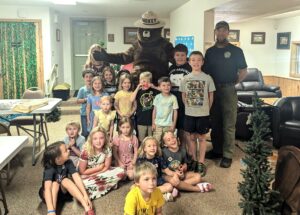
Children visit with Smokey Bear at the Weippe Public Library on July 24. (Credit: Cyrus Forman / U.S. Forest Service)
Smokey regularly appears in parades, visits schools, libraries and meets with crowds of adoring children.
“One of the key things is we do want to reach young people,” Forman said.
Most recently, Forman said Smokey visited the community library in Weippe, Idaho. The kids asked how his handlers feed him.
“I explained that he likes salmon and berries, and so he lives off of forest resources, but we have to go out fishing for him sometimes when he’s busy in the field,” Forman said.
Smokey also has his own merch: Frisbees, pencils, keychains and even comic books.
“Smokey is instantly recognizable, and both adorable and attractive,” Forman said. “And that’s what you want if you want to convey a message, you want a spokes-character who resonates and connects with people.”
Smokey Bear Art Tour
In celebration of Smokey’s 80th birthday, a collection of iconic Smokey Bear posters are on tour across the U.S.
Rudolph “Rudy” Wendelin has been acknowledged as the greatest illustrator of classic Smokey art, Forman said.
Although Smokey art has been around since the 1940s, most of Wendelin’s Smokey art was created in the 1970s and 1980s, said Forman, and his style left a mark on how Smokey is perceived.
“He had a humorous touch,” Forman said. “One of the more famous ones was about how Smokey Bear received so many fan letters.”
One of the iconic illustrations shows Smokey at his ranger station, opening fan mail at his desk. The beloved bear has so many fans that he has his own ZIP code.
“Smokey Bear is one of only two people in the United States to have their own ZIP code because they receive so much mail,” Forman said. “It’s only the president and Smokey Bear.”
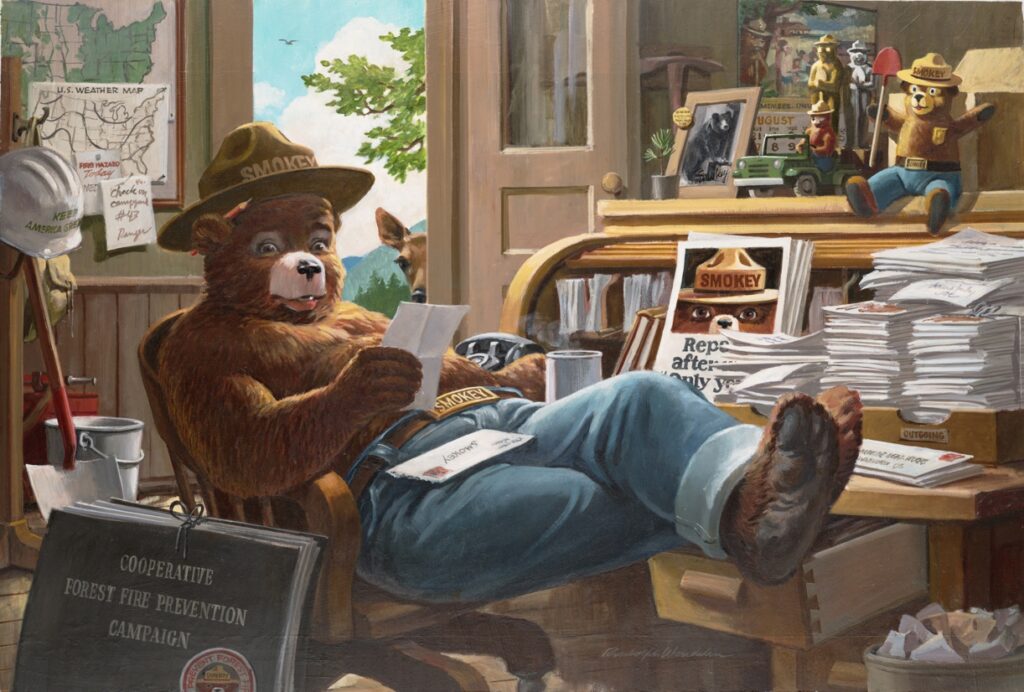
A 1979 painting of Smokey Bear by Rudy Wendelin. Smokey sits in a chair in his office reading his fan mail. (Credit: USDA National Agricultural Library)
Northwest birthday plans for Smokey
Staff at the Washington Department of Natural Resources have planned “Smokey’s 80th Birthday Bash” to take place at the Natural Resource Building in Olympia on Aug. 9.
The child-friendly afternoon event from 1 to 3 p.m. will include birthday cupcakes and refreshments, booths on campfire safety and a photo opportunity with Smokey.
The Lolo Pass Visitor Center, which straddles the line between Idaho and Montana, will also be hosting a birthday party for Smokey Bear.
U.S. Forest Service Ranger Dena Puderbaugh will give talks throughout the day about Smokey’s history as one of the longest running ad campaigns in the country. Wildfire PSAs featuring the bear from over the decades will be playing on the TVs inside.
“We plan to have fire personnel on-site to have some discussions about fire ecology since we’re in the heart of fire season,” said Kayti Bauer, a recreation management specialist for the Nez Perce-Clearwater National Forest.
There will be light refreshments that Smokey Bear would like — such as huckleberry cookies, Bauer said.
More events for Smokey’s birthday can be found on his birthday website.
Although Smokey has been working with the U.S. Forest Service for 80 years, Forman said they do not anticipate his retirement at any time.
“Forest resources are precious to all Americans,” he said. “Smokey will continue to inspire future generations of Americans to do their part in protecting their wildlands.”
Smokey Bear art will be shown at several more locations throughout the Northwest this summer and fall, including the University of Idaho in Moscow.

